I. Introduction of Atlas Copco Compressor
Atlas air compressors are widely recognized as one of the best brands of air compressors on the market. They are known for their durability, reliability, and high-quality performance. Atlas air compressors are available in different types, sizes, and models, each designed to meet specific requirements and applications.

Understanding the different models and their specifications is crucial in choosing the right Atlas air compressor for your needs. By knowing what each model offers, you can select the one that matches your application requirements and ensures efficient and reliable performance.
In this article, we will provide a comprehensive guide to interpreting Atlas air compressor models and their specifications. We will cover different types of Atlas air compressors, how to understand Atlas air compressor model numbers and interpret specifications such as horsepower, CFM, PSI, tank size, duty cycle, voltage, and phase. We will also provide insights on choosing the right Atlas air compressor model for your specific needs.
II. Types of Atlas Air Compressor Models
Atlas air compressors are available in three main types: reciprocating air compressors, rotary screw air compressors, and centrifugal air compressors. Each type has its unique features, advantages, and disadvantages. Understanding the differences between them is important when choosing the right Atlas air compressor model for your needs.
A. Reciprocating air compressors
Reciprocating air compressors are also known as piston compressors. They use pistons and cylinders to compress air, which is then stored in a tank until needed. Reciprocating compressors are suitable for applications that require intermittent air supply, such as powering air tools, filling tires, and other small-scale industrial applications.
B. Rotary screw air compressors
Rotary screw air compressors use two rotors to compress air, which is then stored in a tank until needed. These compressors are known for their continuous and consistent air supply, making them suitable for large-scale industrial applications that require a constant air supply.
C. Centrifugal air compressors
Centrifugal air compressors use a high-speed impeller to compress air, which is then cooled and stored in a tank until needed. These compressors are known for their high CFM (cubic feet per minute) output, making them suitable for large-scale industrial applications that require a high volume of compressed air.
III. Understanding Atlas Copco Air Compressor Model Numbers
Atlas air compressor models are designated by a specific model number that indicates important information about the compressor, such as its horsepower, tank size, and voltage requirements. Understanding the model number breakdown is essential when choosing the right Atlas air compressor model for your needs.
Atlas oil injection screw air compressor
Industrial frequency machine G series, power 4-90kw (4, 5, 7, 11, 15, 18, 22, 30, 37, 45, 55, 75, 90).
Power frequency machine GA series, power 5-315kw (5, 7, 11, 15, 22, 30, 37, 45, 55, 75, 90, 110, 132, 160, 185, 200, 220, 250, 275, 315 ).
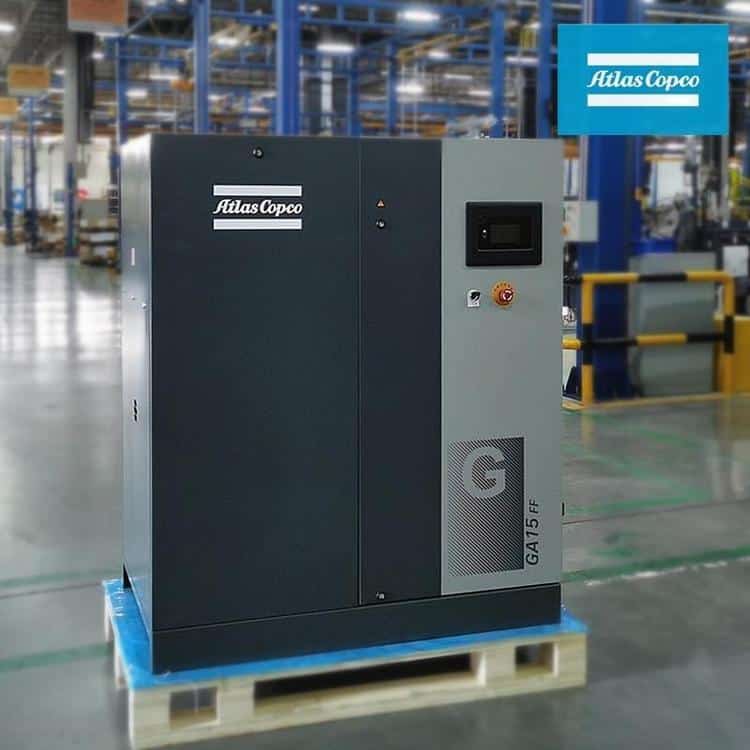
Industrial frequency machine GA+ series, power 5-90kw (5+, 7+, 11+, 15+, 22+, 30+, 37+, 45+, 55+, 75+, 90+).
Ordinary inverter GA VSD series, power 7-185kw (5, 7, 11, 15, 22, 30, 37, 45, 55, 75, 90, 110, 132, 160, 185).
Permanent magnet frequency conversion GA VSD+ series, power 7-185kw (5, 7, 11, 15, 22, 30, 37, 45, 55, 75, 90, 110, 132, 160, 185).
Permanent magnet frequency conversion GA VSDIMP series, power 7-110kw (5, 7, 11, 15, 22, 30, 37, 45, 55, 75, 90, 110).
Power frequency oil-free water lubrication AQ series, power 15-55kw (15, 18, 22, 30, 37, 45, 55).
Frequency conversion oil-free water lubrication AQ VSD series, power 15-55kw (15, 18, 22, 30, 37, 45, 55).
Oil-free scroll machine SF series, power 1-22kw (1, 2, 4, 6, 8, 11, 15, 17, 22).
Frequency conversion oil-free dry screw ZT VSD series, power 15-185kw (15, 18, 22, 30, 37, 45, 55, 75, 90, 110, 132, 160, 185).
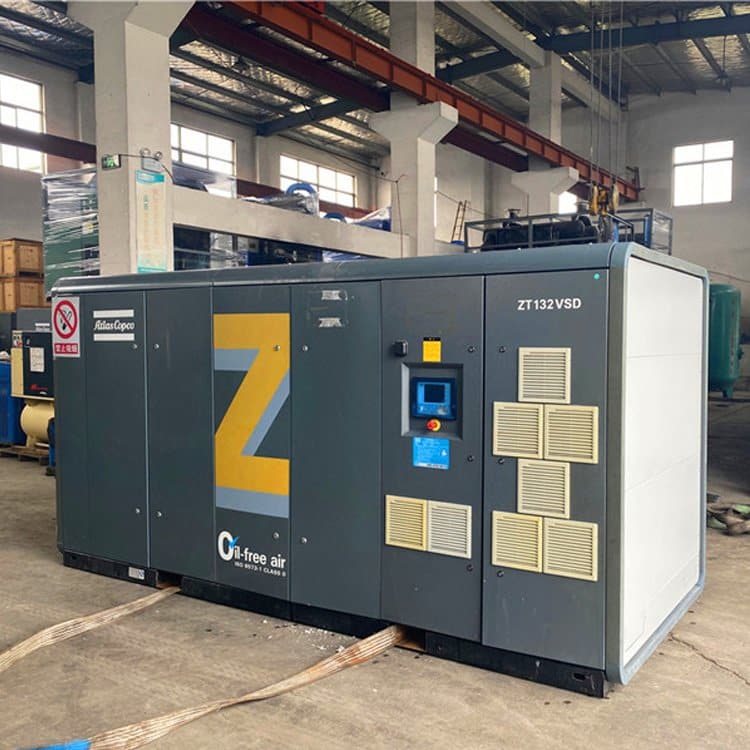
Power frequency oil-free dry screw ZT series, power 15-185kw (15, 18, 22, 30, 37, 45, 55, 75, 90, 110, 132, 160, 185).
Power frequency oil-free dry screw ZR series, power 15-185kw (15, 18, 22, 30, 37, 45, 55, 75, 90, 110, 132, 160, 185).
XAS: single-stage compression, low wind pressure around 4~13 bar.
XRV: Two-stage compression, high wind pressure.
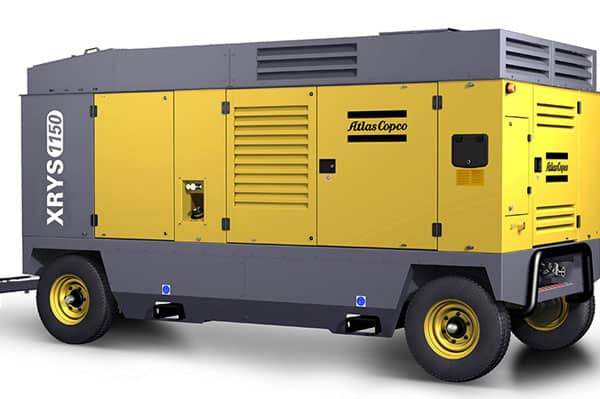
SF series oil-free scroll compressor: flow rate 0.16~1.2m/min, power 1.5~22KW, exhaust pressure 8bar, 10bar.
FX series refrigerated dryer: flow rate 0.42~74.2m3/min.
DD/PD/QD series precision filter: flow rate 0.54m3/min~432m3/min.
IV. Interpreting Atlas Copco Air Compressor Specifications
Atlas air compressors are designed to meet a range of application needs, and their specifications provide important information about their performance capabilities. Understanding Atlas air compressor specifications is crucial when selecting the right compressor for your needs.
In this section, we will discuss the most common Atlas air compressor specifications, including horsepower, CFM, PSI, tank size, duty cycle, voltage, and phase. We will explain what each specification means, how it impacts compressor performance, and what to consider when choosing a compressor based on that specification.
A. Horsepower
Horsepower is a measure of the power output of an Atlas air compressor’s motor. It determines how much work the motor can perform, which directly affects the compressor’s ability to generate compressed air. When considering an Atlas air compressor’s horsepower rating, there are a few important factors to keep in mind.
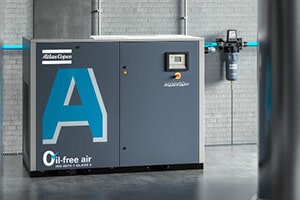
First, the horsepower rating should be appropriate for the type of application you will be using the compressor for. For example, a small air compressor with a horsepower rating of 1-2 horsepower may be suitable for small tasks such as powering airbrushes, while a larger compressor with a horsepower rating of 5-10 horsepower would be better suited for heavy-duty tasks such as sandblasting or powering pneumatic tools.
Second, the horsepower rating can impact the compressor’s ability to maintain a steady flow of compressed air. A compressor with a lower horsepower rating may struggle to maintain consistent air pressure when operating at its maximum capacity, while a compressor with a higher horsepower rating may be able to generate compressed air more efficiently and consistently.
Third, the horsepower rating can impact the energy consumption of the compressor. A compressor with a higher horsepower rating will typically consume more energy, which can result in higher operating costs over time. However, a higher horsepower compressor may also be able to perform tasks more quickly and efficiently, which can offset the higher energy consumption.
B. CFM (cubic feet per minute)
CFM stands for cubic feet per minute and is a measure of the volume of air that an Atlas air compressor can deliver per minute. The CFM rating is an important specification to consider when selecting an air compressor as it determines the compressor’s ability to power pneumatic tools, inflate tires, or perform other tasks requiring compressed air.
When considering an Atlas air compressor’s CFM rating, there are several factors to keep in mind. First, the CFM rating should be appropriate for the type of application you will be using the compressor for. For example, a small compressor with a CFM rating of 2-3 CFM may be suitable for tasks such as inflating tires or powering airbrushes, while a larger compressor with a CFM rating of 10-15 CFM would be better suited for heavy-duty tasks such as sandblasting or powering pneumatic tools.
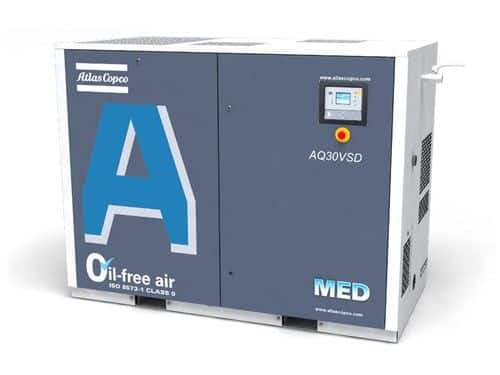
Second, the CFM rating can impact the compressor’s ability to maintain consistent air pressure. If the CFM rating is not sufficient for the task at hand, the compressor may struggle to maintain consistent air pressure, which can lead to a decrease in performance.
Third, the CFM rating can also impact the compressor’s duty cycle. The duty cycle refers to the amount of time that the compressor can operate continuously before it needs to rest. If the CFM rating is not sufficient for the task at hand, the compressor may have to work harder to generate the necessary amount of compressed air, which can cause it to overheat and require more frequent rest periods.
C. PSI (pounds per square inch)
PSI stands for pounds per square inch and is a measure of the pressure of the compressed air that an Atlas air compressor can generate. The PSI rating is an important specification to consider when selecting an air compressor as it determines the compressor’s ability to power pneumatic tools, inflate tires, or perform other tasks requiring compressed air.
When considering an Atlas air compressor’s PSI rating, there are several factors to keep in mind. First, the PSI rating should be appropriate for the type of application you will be using the compressor for. For example, a small compressor with a PSI rating of 90-120 PSI may be suitable for tasks such as inflating tires or powering airbrushes, while a larger compressor with a PSI rating of 150-200 PSI would be better suited for heavy-duty tasks such as sandblasting or powering pneumatic tools.
Second, the PSI rating can impact the compressor’s ability to maintain consistent air pressure. If the PSI rating is not sufficient for the task at hand, the compressor may struggle to maintain consistent air pressure, which can lead to a decrease in performance.
Third, the PSI rating can also impact the compressor’s duty cycle. The duty cycle refers to the amount of time that the compressor can operate continuously before it needs to rest. If the PSI rating is not sufficient for the task at hand, the compressor may have to work harder to generate the necessary amount of compressed air, which can cause it to overheat and require more frequent rest periods.
D. Tank size
The tank size of an Atlas air compressor refers to the volume of air that can be stored in the compressor’s tank. The tank size is an important specification to consider when selecting an air compressor as it determines the compressor’s ability to maintain a consistent supply of compressed air for tasks that require a continuous flow of air.
When considering an Atlas air compressor’s tank size, there are several factors to keep in mind. First, the tank size should be appropriate for the type of application you will be using the compressor for. For example, a smaller tank size may be suitable for tasks such as inflating tires or powering airbrushes, while a larger tank size would be better suited for heavy-duty tasks such as sandblasting or powering pneumatic tools that require a continuous flow of compressed air.
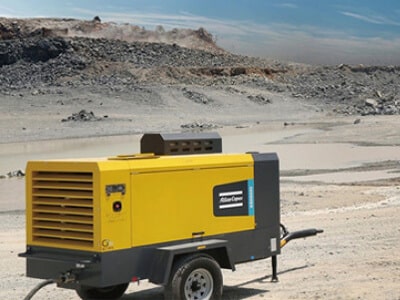
Second, the tank size can impact the compressor’s duty cycle. The duty cycle refers to the amount of time that the compressor can operate continuously before it needs to rest. A larger tank size can increase the compressor’s duty cycle, as it allows for a larger volume of compressed air to be stored and used over a longer period of time.
Third, the tank size can also impact the compressor’s portability and storage requirements. Larger tank size can make the compressor heavier and bulkier, which can make it more difficult to move or store in a small workspace.
E. Duty cycle
The duty cycle of an Atlas air compressor refers to the amount of time the compressor can operate continuously before it needs to rest to prevent overheating. The duty cycle is an important specification to consider when selecting an air compressor as it determines the compressor’s ability to operate effectively and efficiently over a sustained period of time.
When considering an Atlas air compressor’s duty cycle, there are several factors to keep in mind. First, the duty cycle should be appropriate for the type of application you will be using the compressor for. For example, a compressor with a shorter duty cycle may be suitable for intermittent or light-duty tasks such as powering airbrushes or inflating tires, while a compressor with a longer duty cycle would be better suited for heavy-duty tasks such as powering pneumatic tools or sandblasting.
Second, the duty cycle can impact the compressor’s performance and lifespan. If the duty cycle is exceeded, the compressor may overheat and become damaged, which can lead to reduced performance or even complete failure. Therefore, it is important to choose a compressor with a duty cycle that matches your needs to ensure that it can perform effectively and efficiently over the long term.
Third, the compressor’s duty cycle can also impact the compressor’s power consumption. If the compressor is operating for an extended period of time, it may consume more power and increase your energy costs. Therefore, it is important to choose a compressor with a duty cycle that matches your needs while also considering its energy efficiency.
F. Voltage and phase
The voltage and phase of an Atlas air compressor refer to the electrical requirements needed to power the compressor. Voltage is the measure of electrical potential between two points, while phase refers to the number of power lines used to supply electricity to the compressor.
When considering an Atlas air compressor’s voltage and phase, there are several factors to keep in mind. First, the voltage and phase should be appropriate for the power supply available in your workspace. It is important to ensure that the compressor’s electrical requirements match the voltage and phase of your electrical supply to ensure that the compressor can operate effectively and safely.
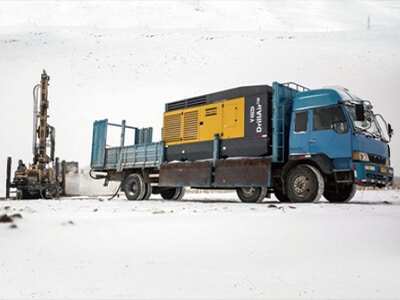
Second, the voltage and phase can impact the compressor’s performance and power consumption. A compressor with a higher voltage and phase may be able to operate more efficiently and deliver more power compared to a compressor with a lower voltage and phase. However, it is important to ensure that the electrical supply in your workspace can support the higher voltage and phase requirements of the compressor.
Third, the voltage and phase can impact the cost of operating the compressor. A compressor with higher voltage and phase requirements may consume more power and result in higher energy costs compared to a compressor with lower voltage and phase requirements.
V. Choosing the Right Atlas Copco Air Compressor Model
a: Factors to Consider When Choosing a Model
When choosing the right Atlas air compressor model, there are several factors to consider, including:
1. Type of application: Consider the type of application you will be using the compressor for. If you will be using it for light-duty tasks such as powering airbrushes or inflating tires, a smaller compressor may be suitable. If you will be using it for heavy-duty tasks such as powering pneumatic tools or sandblasting, a larger compressor with a higher CFM and PSI rating may be required.
2. Available workspace: Consider the available space in your workspace and choose a compressor that will fit comfortably and provide adequate ventilation.
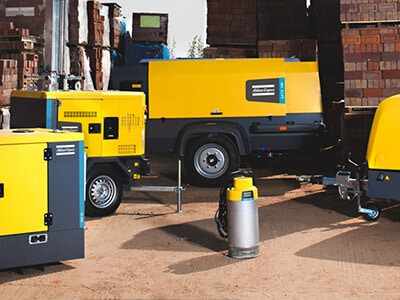
3. Power supply: Consider the voltage and phase requirements of the compressor and ensure that they match the electrical supply available in your workspace.
4. Budget: Consider your budget and choose a compressor that provides the necessary features and specifications for your specific needs while also fitting within your budget.
5. Brand reputation: Consider the reputation of the Atlas air compressor brand and read reviews from other users to ensure that you are purchasing a reliable and high-quality compressor.
VI. Conclusion and Get Atlas Copco Compressors Catalogs
In conclusion, Atlas air compressors are essential tools for a wide range of applications, When selecting an Atlas air compressor, consider the type of application, available workspace, power supply, budget, and brand reputation. By taking these factors into account, you can choose a compressor that provides the necessary features and specifications for your specific needs.
Overall, choosing the right Atlas air compressor and properly maintaining it can help you get the most out of your investment and ensure that your compressor provides reliable and consistent performance for years to come.
Yscompressor is the authorized distributor of Atlas in China, we can get Atlas air compressors at competitive prices from Atlas’s Chinese factory, you can contact us for catalogs and quotations of Atlas air compressors, please contact us without hesitation.




